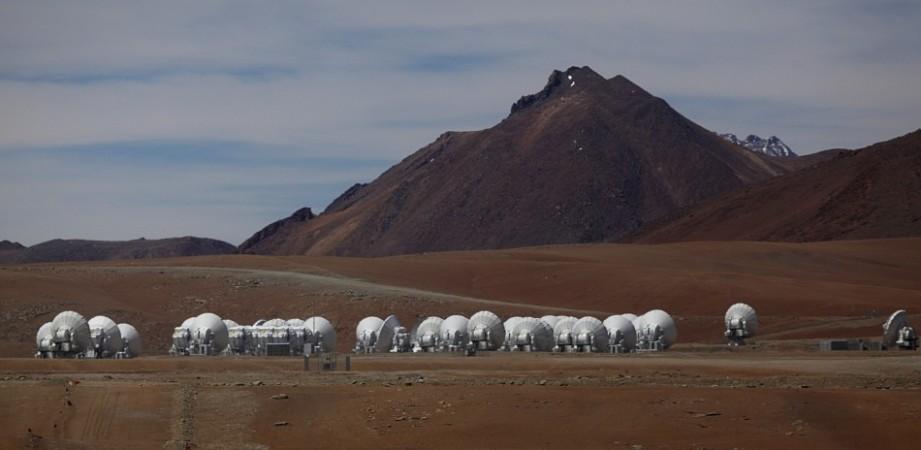The origin of stars and planets can now be witnessed from Earth with the world's largest radio telescope, "ALMA," which has a resolution ten times higher than the Very Large Array (VLA) and five times finer than the Hubble Space Telescope.
The cutting-edge ALMA (Atacama Large Millimeter/submillimeter Array) was developed by scientists from European, East Asian and North American countries.
The telescope is credited as the largest ground-based astronomy project till date which was devised at a cost of around $1.3 billion.

ALMA consists of an array of 66 huge antennas ranging from 7 to 12 metres which is located at high and dry sites of Chajnantor plateau in the Atacama desert of northern Chile, where it is mounted up at an altitude of 5,000 metres to avoid obscure vision caused by Earth's atmosphere and water vapour.
"What is so very special about this place is that, right here above our heads, there is virtually no water vapor. There is just so little that whatever light is emitted from a heavenly body, galaxy or star, it gets here with no interference" explained Gianni Marconi, an astronomer with ALMA, told Agence France-Presse.
According to reports, construction employees were provided with supplemental oxygen while working at the site which is devoid of humidity and vegetation.

Scientists are now looking forward to the discoveries to be made with the world's largest telescope. "The scientific community wants to use ALMA in its research on star formation, the birth of planets and not just what is happening in our solar system, but also on how the system was created after the Big Bang," ALMA director Thijs de Graaw said..
"It is a revolution in the history of the universe in the realm of millimetric and sub-millimetric waves, which can look through clouds of dust and focus on the formation of stars themselves. Telescopes cannot see what is happening inside these clouds. With ALMA, we can. And that is like opening a new window."
Scientists claimed that the telescope will unveil details of the formation of the universe. They are also hoping for a major breakthrough in their research and study of the "alien world."
"ALMA already has seen dust rings around stars that are very narrow, and by modeling... you can infer the dust ring has planets inside and outside the ring. Even though you can't see the planet, you can see the effects of the planet. That would be the predominant way that ALMA will study extra-solar planets," Ulvestad explained.
Have a look at ALMA in a video below:

















